The Greek gods ruled every part of the ancient world, from the sky above to the dark rivers beneath the earth. Their temples rose across the Mediterranean, their names guided rituals and oaths, and their stories explained storms, harvests, and the fate of souls. Power among them came from domains, symbols, and the authority to shape both nature and human destiny, and those threads run through the myths that survived in poetry, drama, and carved stone.
This countdown focuses on major deities who appear again and again in classical sources and public worship. Each entry notes family ties, spheres of influence, famous sanctuaries, and the episodes that fixed these gods in memory. It also points to the emblems that identified them in art, the creatures and objects linked to their names, and the cities or rites that kept their cults alive for centuries.
15. Hestia
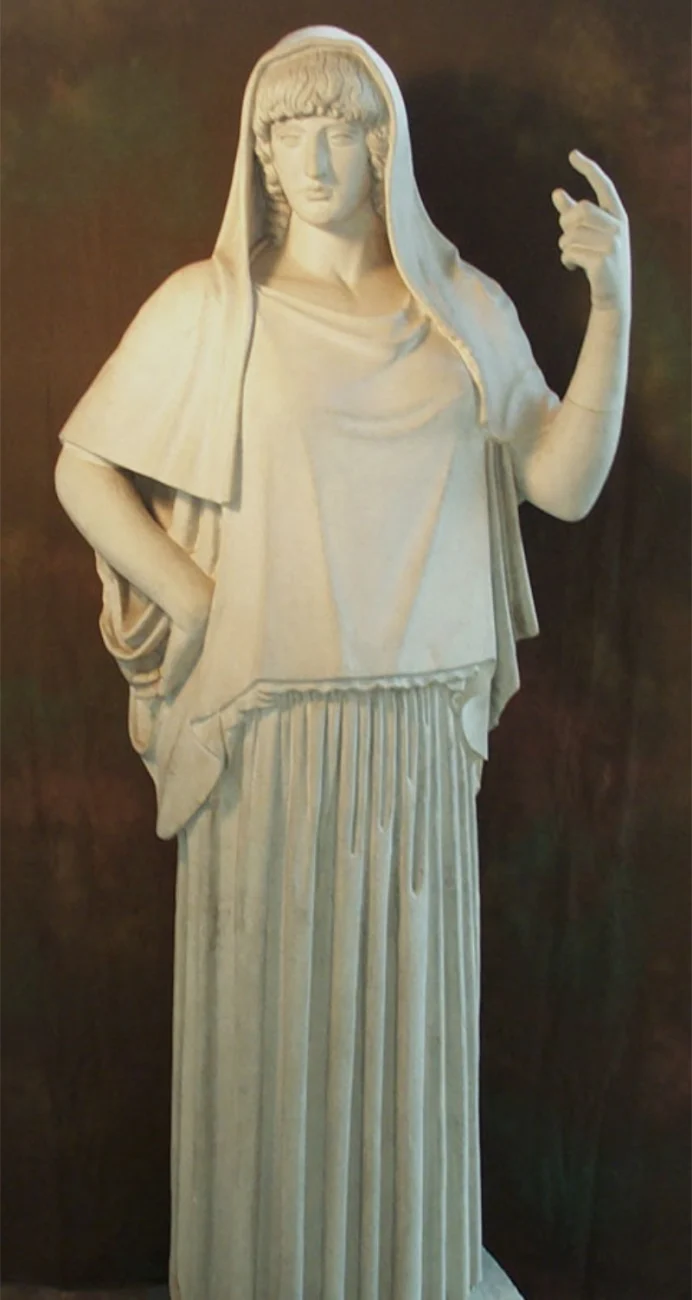 anonymous
anonymousHestia is the goddess of the hearth, domestic order, and the sacred fire that burned in every Greek home and in the prytaneion of each city. She is a daughter of Cronus and Rhea and the elder sister of Zeus, Poseidon, and Hades, and she is often named first in household prayers. Her fire symbolized the continuity of family and state, and new colonies carried a flame from the mother city to light their communal hearth.
Artists showed Hestia with a veil and a simple branch or a flame, and she is associated with the circle of the hearth and with hospitality. Her cult stressed stability and peace, and myths record her oath to remain unmarried, which kept her outside the rivalries that shaped many divine stories. Every sacrifice began with an offering to Hestia, which placed her presence at the start of civic and private ritual.
14. Hephaestus
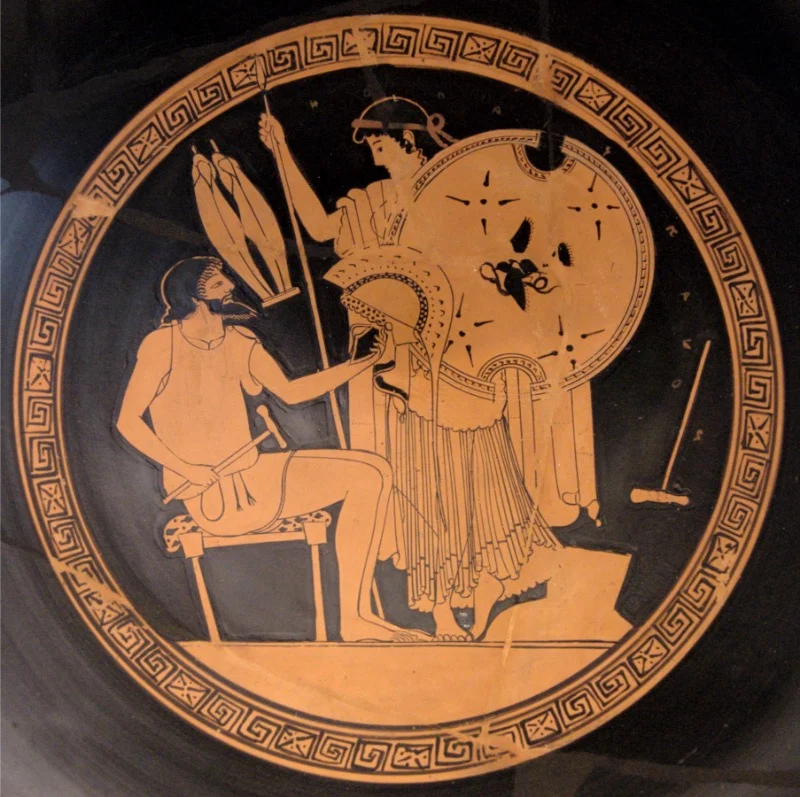 Foundry Painter
Foundry PainterHephaestus is the divine smith, master of fire, metalwork, and ingenious craft. He is the son of Hera in many accounts, and he is linked to Mount Etna and the volcanic forges where his assistants, the Cyclopes, shaped weapons for gods and heroes. He built the golden thrones of Olympus, the shield of Achilles, and automata that moved on their own.
Symbols of Hephaestus include the hammer, tongs, and anvil, and he is often depicted with a short work tunic. His workshops appear in myths as places where bronze and gold seemed to come alive, and ancient cities with strong metalworking traditions honored him with festivals. His skill connected divine authority to visible objects, from palace doors to chariots, which made him central to the physical splendor of Olympus.
13. Dionysus
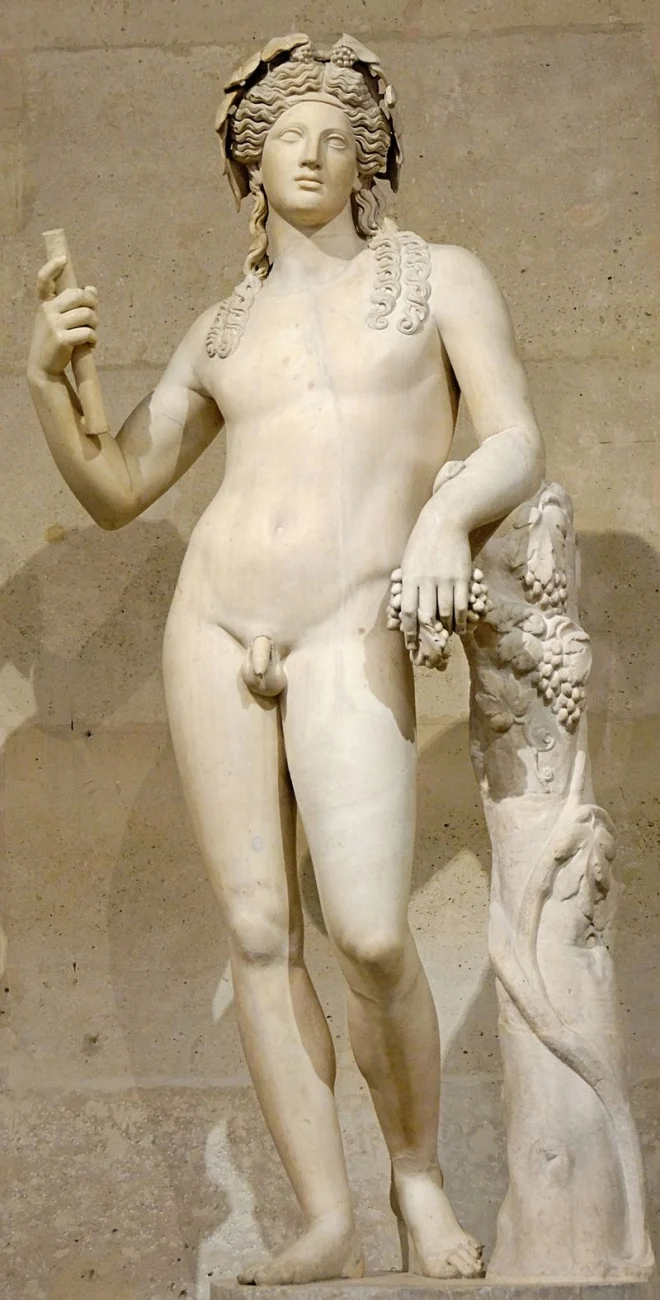 Marie-Lan Nguyen
Marie-Lan Nguyen Dionysus presides over wine, ecstatic rites, and the dissolving of ordinary boundaries during festival time. He is the son of Zeus and Semele, and his birth story involves rescue and transformation, which suits a god of altered states and seasonal growth. His processions and the theater festivals linked to his worship shaped civic calendars and public performance.
Vines, ivy, the thyrsus staff, and the panther or leopard mark his presence in art. His followers, the maenads and satyrs, appear in myths that explore both the renewal and the disruption that come with his power. Cities held Dionysia with choruses and dramatic competitions, and his rites framed the connection between sacred celebration and communal identity.
12. Persephone
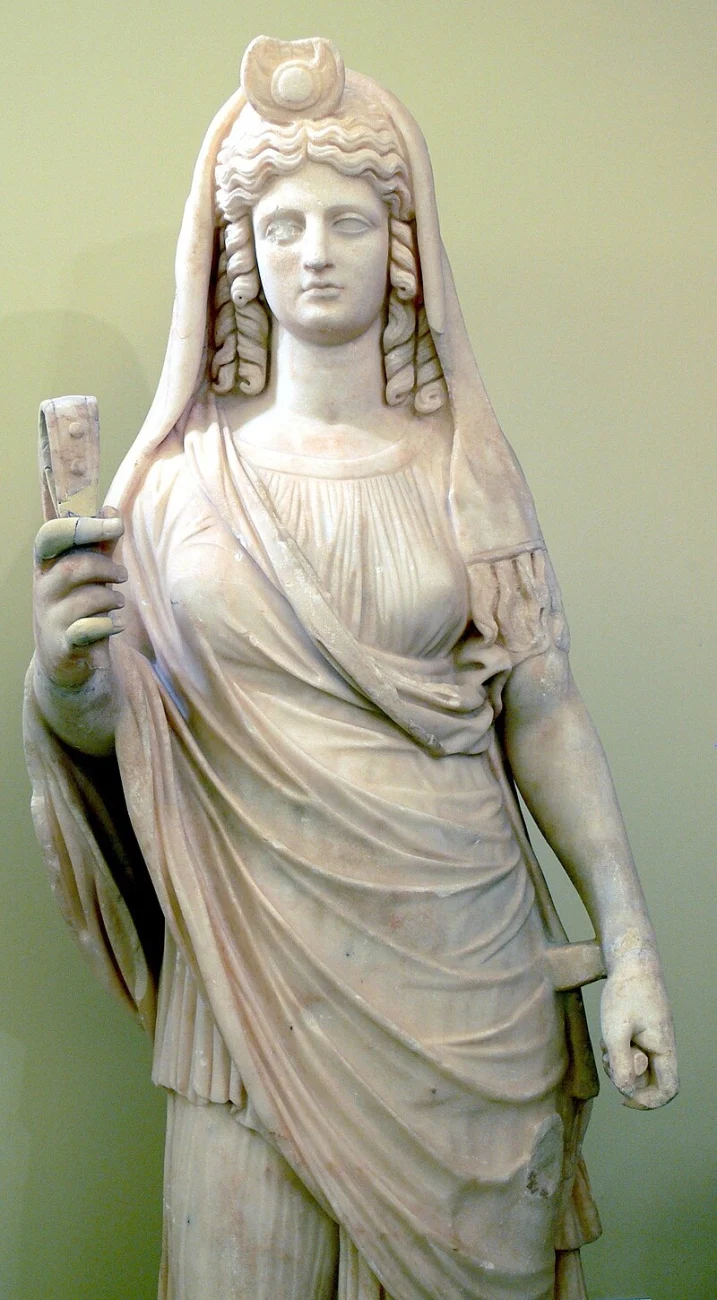 Wolfgang Sauber
Wolfgang SauberPersephone is queen of the underworld and a goddess of growth who moves between earth and the realm of the dead. She is the daughter of Demeter and Zeus, and her abduction by Hades stands at the center of the Eleusinian Mysteries, which promised initiates a better fate after death. Her annual return to the surface marked the cycle of planting and harvest.
She is shown with a torch, a pomegranate, or a scepter, and artists often placed her beside Demeter and Hades to express her double role. Sanctuaries at Eleusis and other sites preserved her cult with secret rites and processions. Her myth taught the rhythm of absence and return, and it joined family bonds to the ordering of seasons and mortality.
11. Hecate
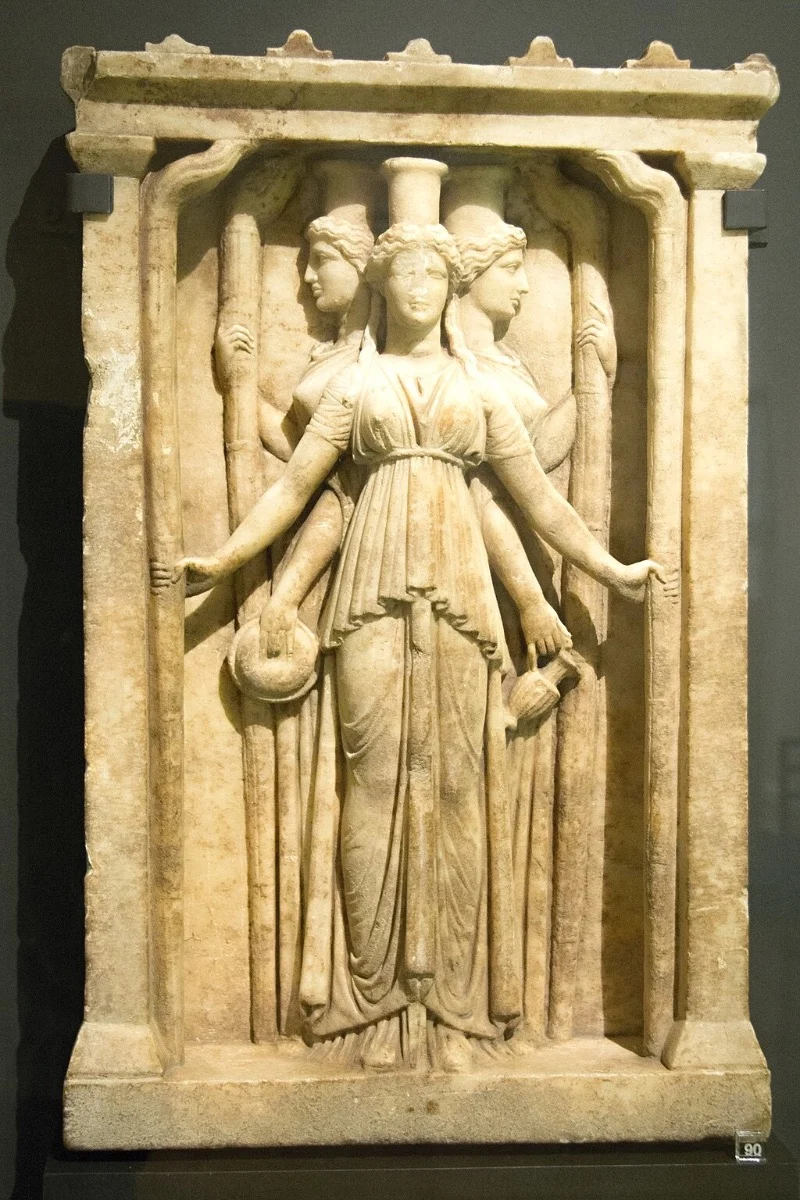 Zde
ZdeHecate governs crossroads, thresholds, witchcraft, and protective magic at the edges of the known. She appears as a guardian at gates and as a helper in transitions, and many household shrines stood at doorways to invite her favor. Some images show her in triple form to reflect her watch over entrances and branching roads.
Her symbols include torches, keys, and hounds, and offerings for Hecate were left at crossroads during the dark of the moon. Texts and inscriptions connect her to protective spells and to guidance in moments of danger or change. Her presence in the hymn tradition and in later magical papyri shows the reach of her cult across centuries and regions.
10. Ares
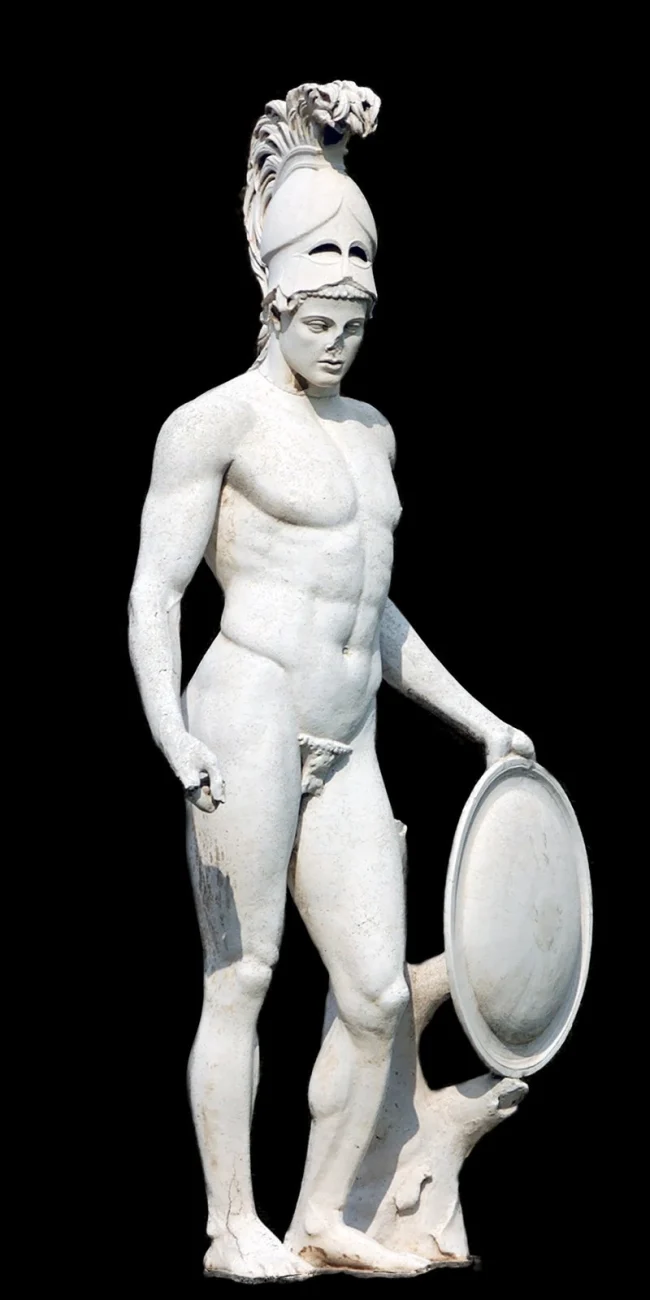 Ares Canope Villa
Ares Canope VillaAres embodies the fierce side of war, the shock of battle, and the raw force that decides fields and city walls. He is a son of Zeus and Hera, and myths often place him in the clash of armies rather than the planning of strategy. His stories describe wounds, captivity, and quick recoveries, which reflect the unpredictable nature of combat.
His emblems include spear, shield, and crested helm, and he is accompanied by figures named for panic and fear. Temples to Ares stood in several cities, and the Areopagus in Athens preserved his name in civic law and judgment. His worship acknowledged the cost of warfare while asking for strength and protection for fighting men.
9. Demeter
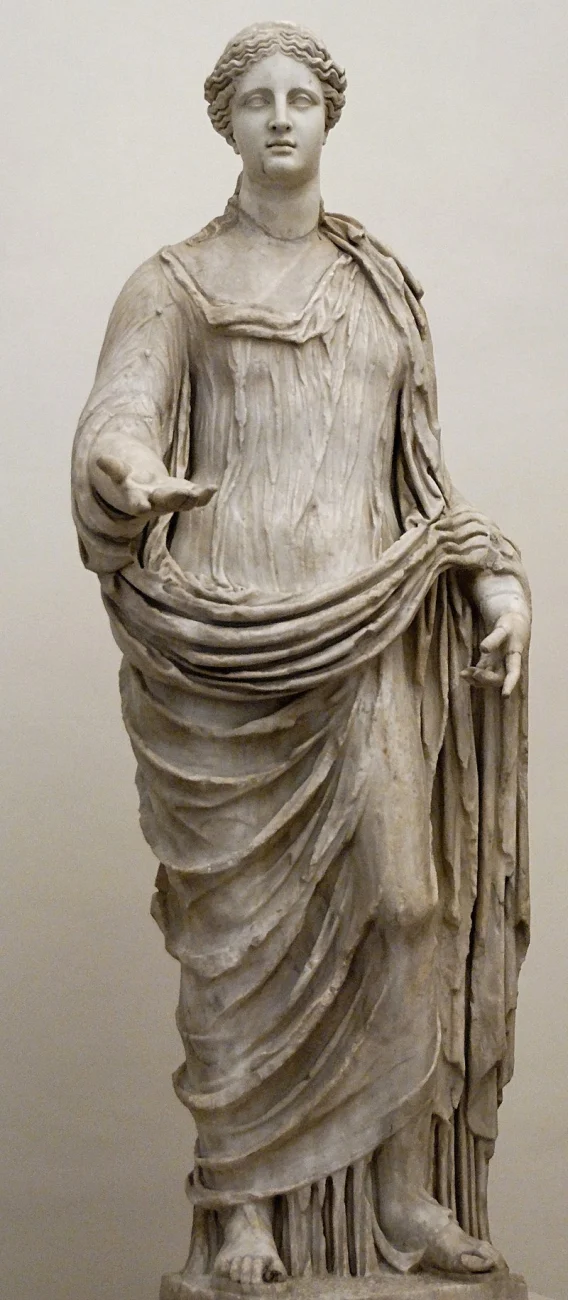 Marie-Lan Nguyen
Marie-Lan Nguyen Demeter controls grain, fertile soil, and the knowledge of cultivation that sustains life. She is the sister of Zeus and mother of Persephone, and her search for her daughter shaped the Eleusinian Mysteries that drew initiates from across the Greek world. The sowing and reaping of crops followed her favor, and communities thanked her with first fruits and processions.
She carries sheaves of wheat and a torch in art, and sacred baskets and ploughs appear in her festivals. Rural Thesmophoria honored Demeter with rites restricted to women that linked family well being to agricultural renewal. Her story placed the human table at the center of divine concern, and it joined earth’s cycles to the binding promises of ritual.
8. Hermes
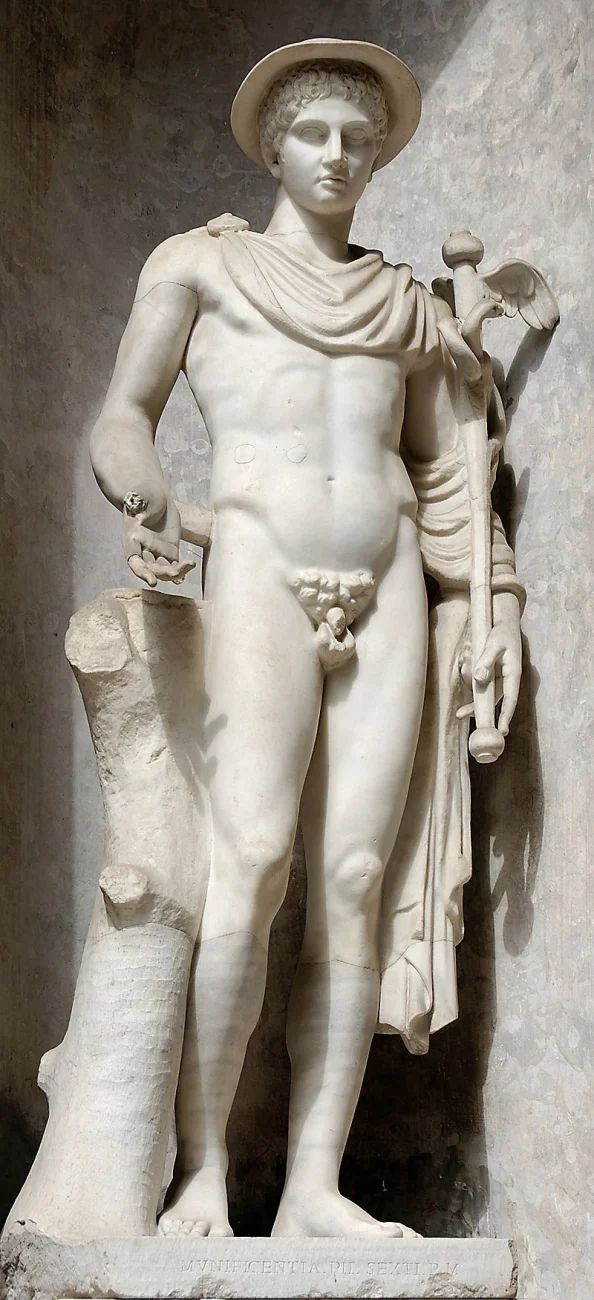 Marie-Lan Nguyen
Marie-Lan Nguyen Hermes serves as messenger of the gods, guide of souls, and patron of trade, travel, and clever speech. He is a son of Zeus and Maia, and myths credit him with inventing the lyre and with swift service between Olympus, earth, and Hades. Way markers called herms stood along roads and in city spaces to mark boundaries and offer protection.
His symbols include the caduceus staff, winged sandals, and a travel cap, and he appears in stories of safe passage, markets, and diplomacy. Athletes and heralds prayed to Hermes for success, and his shrines guarded doorways and crossroads. His role as psychopomp led souls to the underworld and made him essential in funerary customs and prayers.
7. Artemis
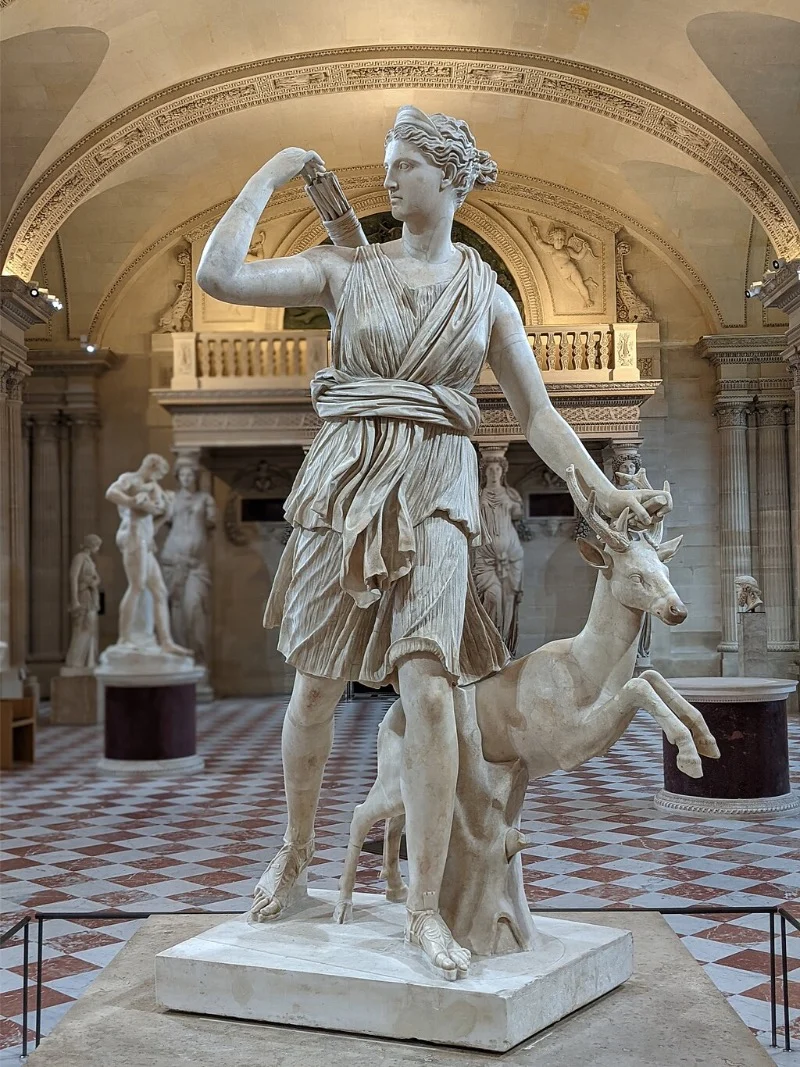 Shonagon
ShonagonArtemis rules wild places, the hunt, and the protection of young animals and children. She is the twin of Apollo and a daughter of Zeus and Leto, and her cult linked mountain sanctuaries and sacred groves to city festivals. Myths show her defending her vows and punishing violations of purity or respect for nature.
She carries a bow and quiver and is accompanied by deer or hunting dogs, and her crescent diadem marks her connection to the moon in later traditions. Important temples stood at Ephesus and Brauron, where garments and rites marked stages of girlhood. Offerings asked for safe childbirth and healthy growth, and her presence balanced wilderness with civic order.
6. Apollo
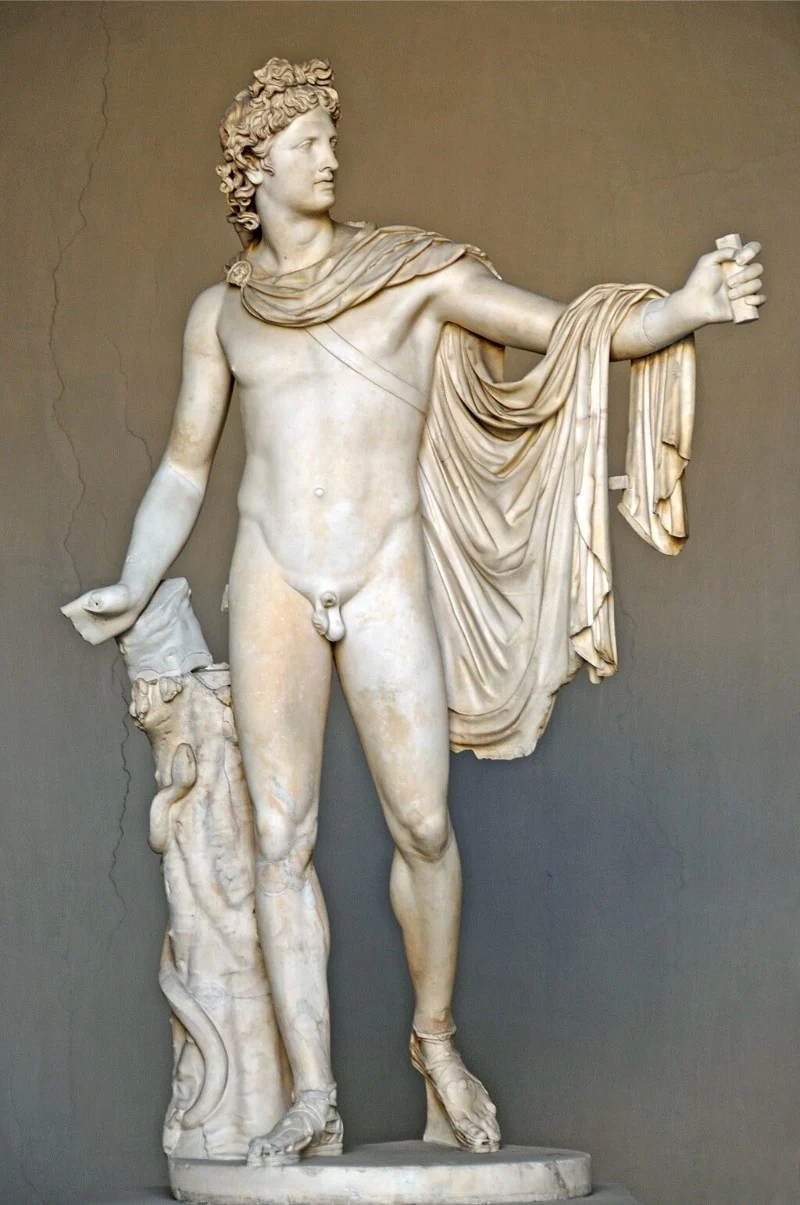 Dennis G. Jarvis
Dennis G. JarvisApollo presides over prophecy, music, healing, and plague, and he is tied to order, measure, and the light of the sun in later sources. He is the twin of Artemis and a son of Zeus and Leto, and he claimed Delphi after slaying the serpent that guarded the site. Oracles delivered responses in his name that guided politics, warfare, and colonization.
His attributes include the laurel wreath, lyre, and bow, and his festivals featured athletic and musical contests. The sanctuary at Delphi received rich dedications, and the temple at Delos anchored his island birth story. Physicians invoked him for cures and protection, and his mythic songs ordered the harmony of gods and cities.
5. Hera
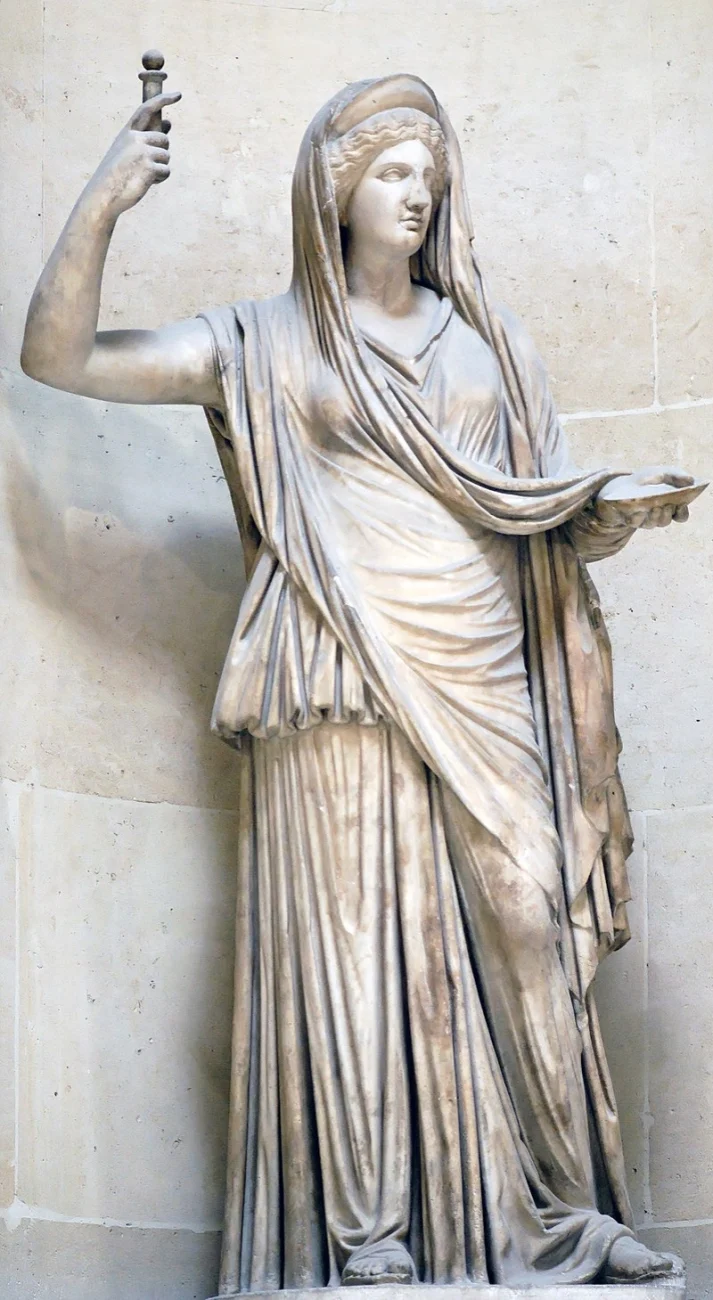 Marie-Lan Nguyen
Marie-Lan Nguyen Hera is queen of the gods and protector of marriage, women, and lawful succession. She is the sister and wife of Zeus, and her myths examine loyalty, rivalry, and the status of legitimate heirs. Cities honored her with grand temples and with rites that marked the stages of marriage and childbirth.
She is represented with a scepter, a crown, and the peacock, and she presides from a throne in sculpted groups that show the Olympian court. Festivals such as the Heraia involved athletic events for women, and her sanctuaries at Argos and Samos held treasuries of offerings. Her authority supported civic stability through family order and public ritual.
4. Athena
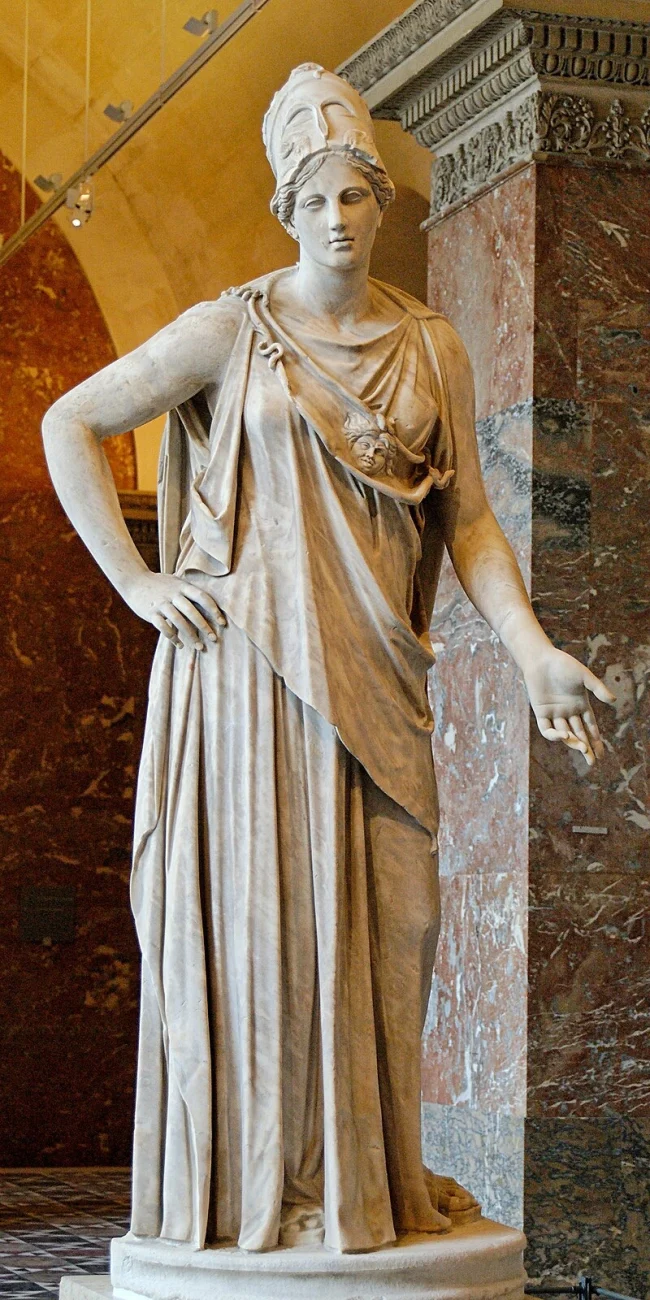 Jastrow
JastrowAthena governs wisdom, crafts, and the disciplined side of war that relies on planning and skill. She is the daughter of Zeus and is born fully armed in the most famous account, which symbolizes insight that arrives complete and ready for action. She serves as city protector in many places, and her name crowns Athens with patronage.
Artists gave Athena the aegis with a Gorgon head, a spear and shield, and the owl that marks clear sight. The Panathenaea brought processions and contests to her city, and the Parthenon preserved her statue and treasury. Myths record her guidance of heroes through counsel and craft, and her presence joined intelligence to strength in civic life.
3. Hades
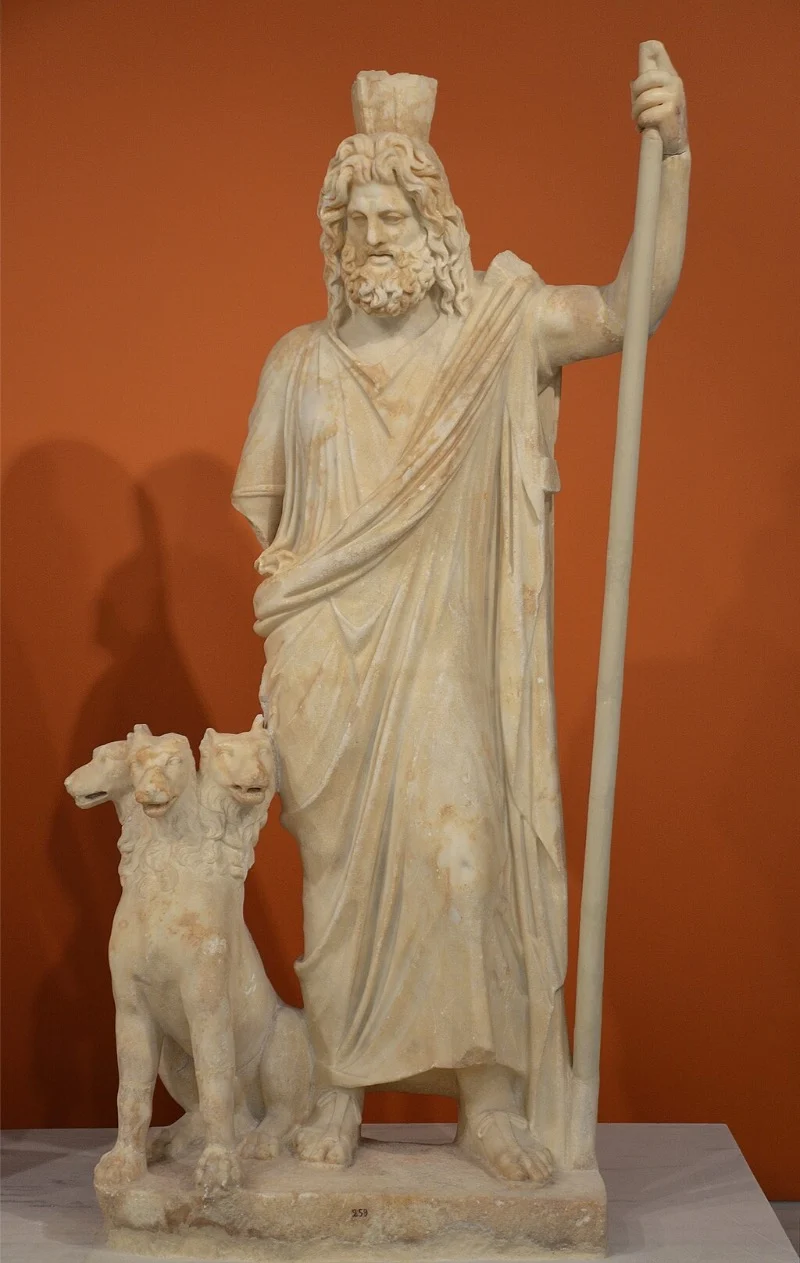 Carole Raddato
Carole RaddatoHades rules the underworld, the realm of shades, and the riches beneath the earth that include precious metals and fertile soil. He is a brother of Zeus and Poseidon, and his authority grew from the division of the cosmos after the fall of the Titans. Mortals rarely worshiped him openly, yet oaths and burials acknowledged his unyielding rule.
His emblems include a dark scepter, a helm that confers invisibility, and the three headed hound that guards the gates. Sanctuaries at cave mouths and necropoleis marked entrances to his domain, and rituals focused on appeasement rather than celebration. His order maintained boundaries between living and dead, which secured the rhythm of communities and rites.
2. Poseidon
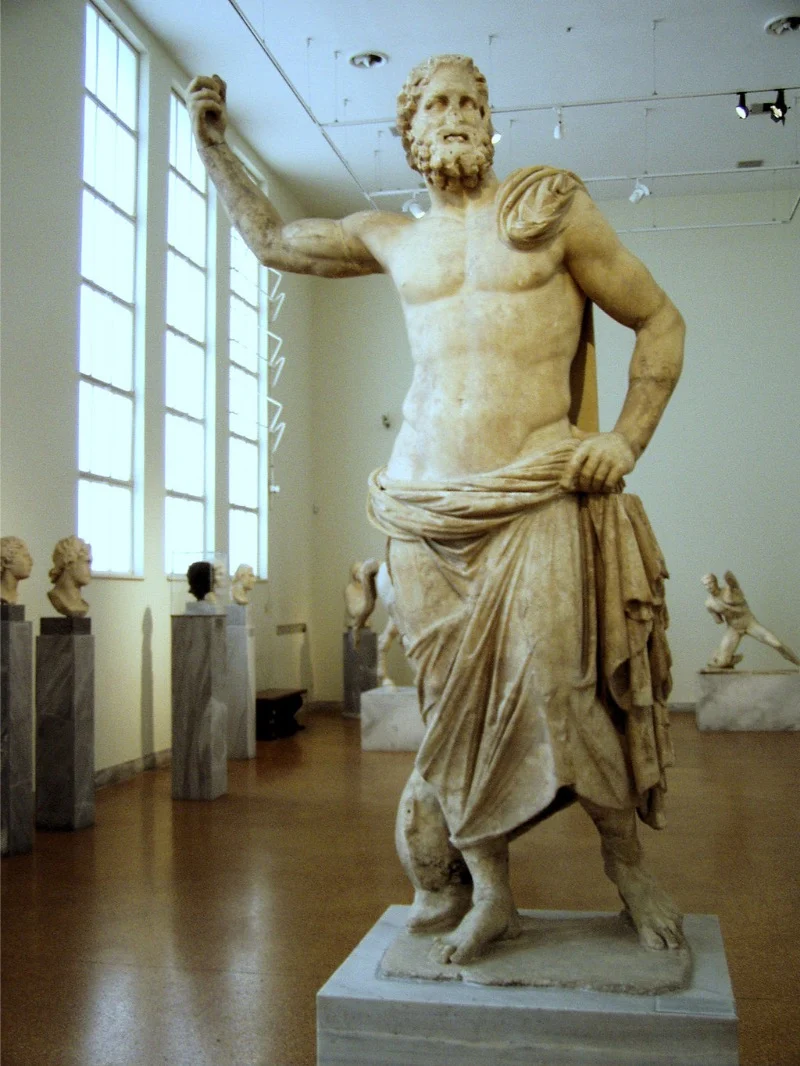 DerHexer
DerHexerPoseidon commands the sea, earthquakes, and horses, and sailors and coastal cities pledged to him for safe passage and storm control. He is a brother of Zeus and Hades, and his trident and sea creatures identify him in sculpture and coinage. Myths tell of contests for cities and of anger that stirred waves against offending rulers.
Temples at Cape Sounion and Isthmia drew offerings from merchants, travelers, and athletes, and his festivals included chariot races and processions. Earth tremors and sudden springs were described as signs of his presence, and horse breeding and training stood under his favor. His reach covered trade routes, fisheries, and the security of ships and harbors.
1. Zeus
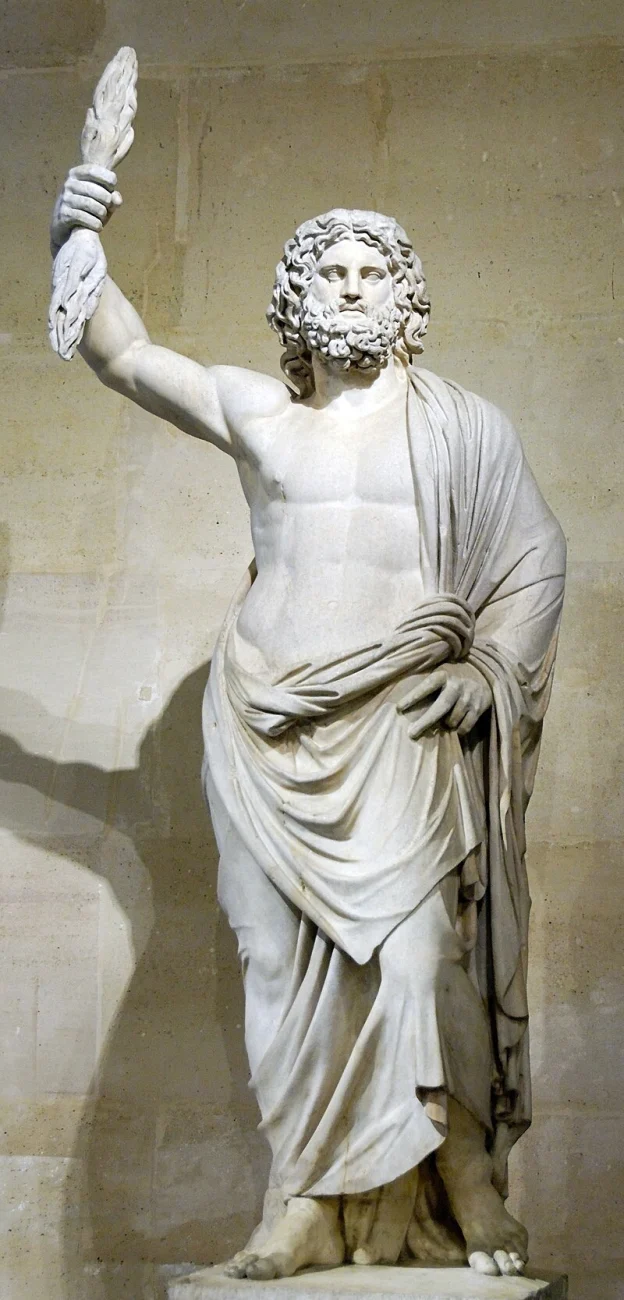 Marie-Lan Nguyen
Marie-Lan Nguyen Zeus is king of the gods and the final arbiter of oaths, justice, and the order of sky and weather. He overthrew the Titans and apportioned realms among his brothers, and he governed storms, thunder, and the laws that bind guests and hosts. High places such as Mount Olympus and Dodona kept his oracles and rites.
His symbols include the thunderbolt, the eagle, and the scepter, and colossal statues displayed his seated authority in temples across Greece. Games at Olympia honored him with sacrifices and athletic competitions that gathered city states under a shared calendar. His judgments shaped the fate of gods and mortals, and his protection upheld treaties, assemblies, and the sanctity of sworn words.
Got your own take on the order or a favorite story that shows a god’s power in action? Share your thoughts in the comments.

.jpeg)



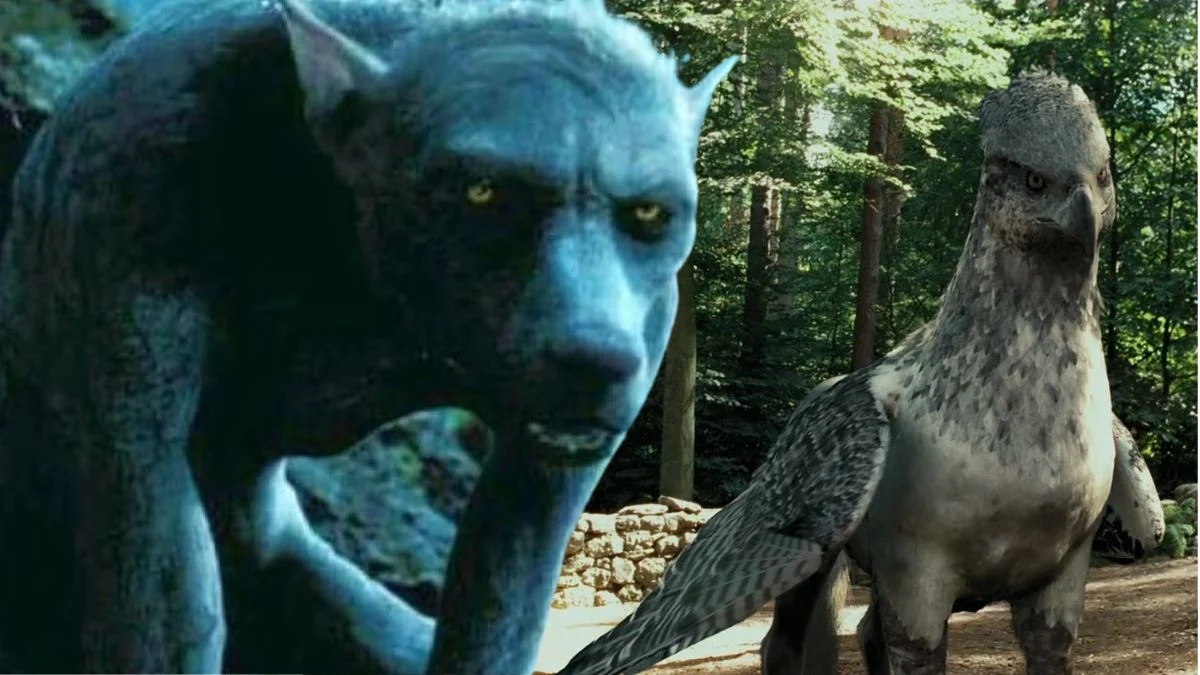




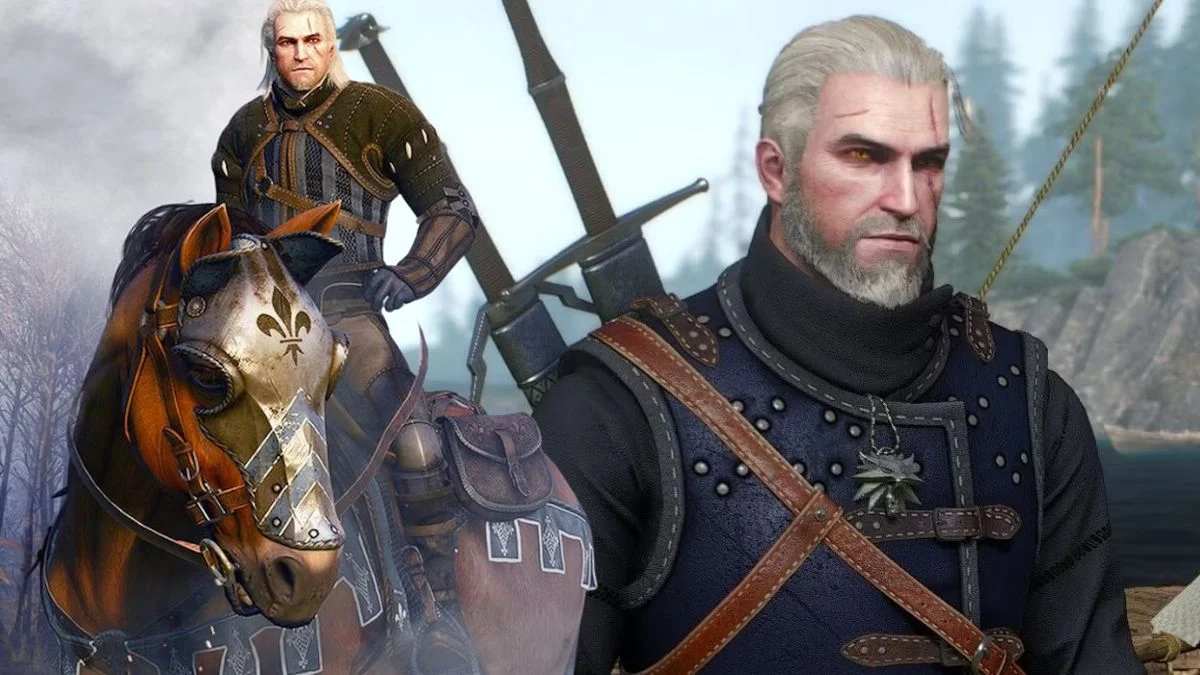

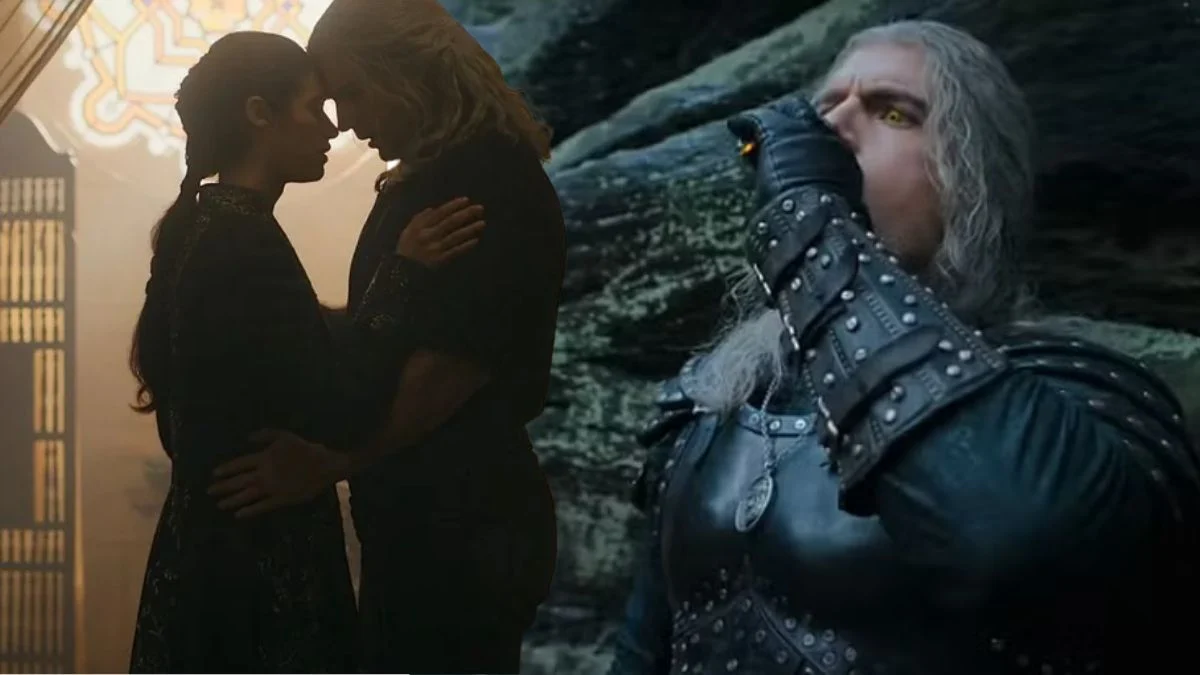








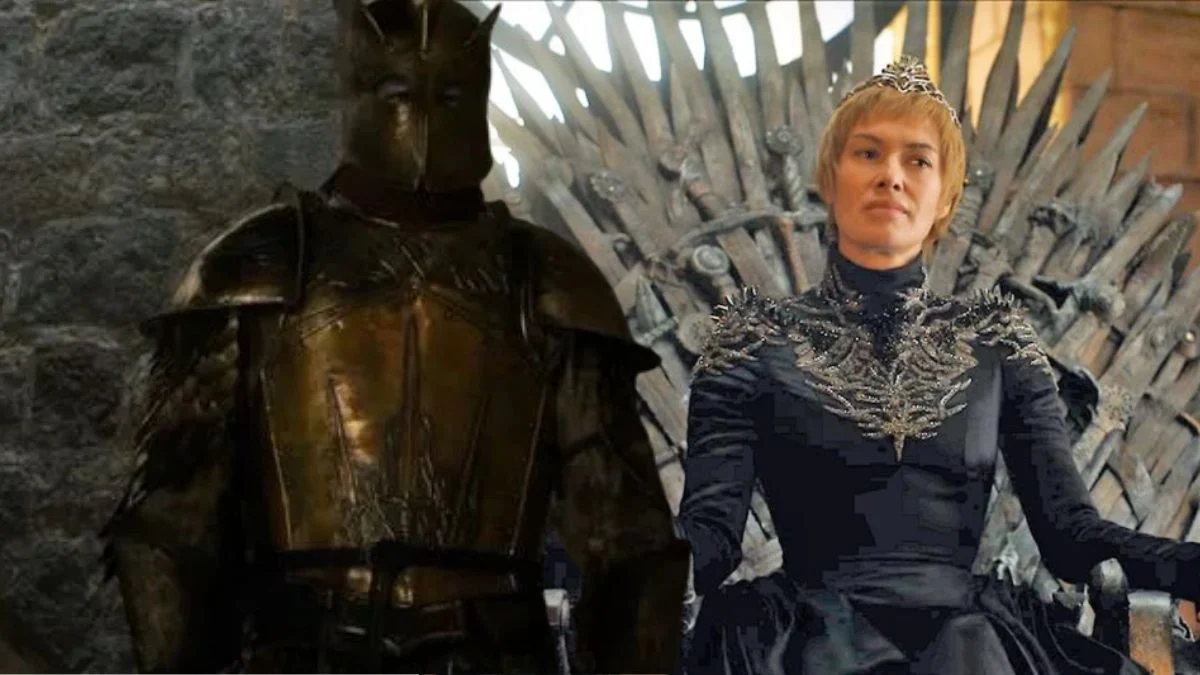




.jpeg)












 English (US) ·
English (US) ·